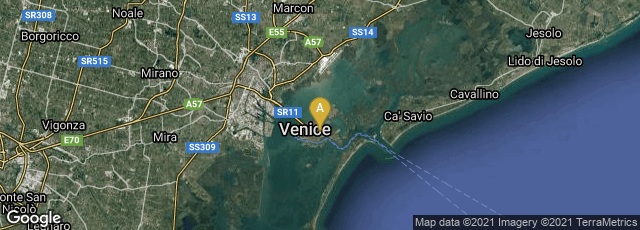

In September 1469, in order to initiate the new technology in their community, the Venetian Senate granted the German printer Johannes de Spira (Speyer) a five-year monopoly on printing in the city. This was the first monopoly on printing granted by a European government. Speyer probably set up shop in Venice well before September, since issued Cicero's Epistolae ad familiares in an edition of 100 copies in 1469. (ISTC no. ic00504000). "Four months" later he issued a second edition of 300 copies (ISTC no. ic00505000). Also in 1469 he published the first edition of Pliny's Historia naturalis, a long text, in an edition of 100 copies (ISTC no. ip00786000). In November 2013 a digital facsimile of the copy of the first edition of Pliny in the Bibliothèque de Saint Geneviève was available at this link.
From the text of the decree it appears that the Venetian Senate granted the monopoly to Speyer as a way of supporting his ongoing work, which they much admired. The manuscript of the grant is preserved in the Venetian State Archives (ASV, NC, reg. 1, c.55r). It is reproduced in color and translated in Primary Sources on Copyright (1450-1900), eds L. Bently & M. Kretschmer, www.copyrighthistory.org, from which I quote:
"The art of printing books has been introduced into our renowned state, and from day to day it has become more popular and common through the efforts, study and ingenuity of Master Johannes of Speyer, who chose our city over all the others. Here he lives with his wife, children and whole household; practices the said art of printing books; has just published, to universal acclaim, the Letters of Cicero and Pliny's noble work On Natural History, in the largest type and with the most beautiful letter-forms; and continues every day to print other famous volumes so that [this state] will be enriched by many, famous volumes, and for a low price, by the industry and fortitude of this man. Whereas such an innovation, unique and particular to our age and entirely unknown to those ancients, must be supported and nourished with all our goodwill and resources and [whereas] the same Master Johannes, who suffers under the great expense of his household and the wages of his craftsmen, must be provided with the means so that he may continue in better spirits and consider his art of printing something to be expanded rather than something to be abandoned, in the same manner as usual in other arts, even much smaller ones, the undersigned lords of the present Council, in response to the humble and reverent entreaty of the said Master Johannes, have determined and by determining decreed that over the next five years no one at all should have the desire, possibility, strength or daring to practice the said art of printing books in this the renowned state of Venice and its dominion, apart from Master Johannes himself. Every time that someone shall be found to have dared to practice this art and print books in defiance of this determination and decree, he must be fined and condemned to lose his equipment and the printed books. And, subject to the same penalty, no one is permitted or allowed to import here for the purpose of commerce such books, printed in other lands and places. . . ."
"Scholars and writers too went more readily to Venice than to any other city, in their search for publishers, attracted by the excellence of the local paper stock and typography as much as relatively liberal atmosphere in the city. In contrast to other early modern states where censorship and state regulation took on early to encourage and protect the nascent trade, in Venice, the trade was left virtually uncontrolled in the first years of its development. It was only in 1515 when Andrea Navagero was appointed for the task of the official revision of books that the state began to exercise a degree of control over what was printed. Even then, this literary censorship was primarily concerned with the quality of printed books to secure commercially successful correct editions. Thus the natural play of economic forces had left printers free to establish their printing enterprises and compete against each other in an open market. In other words, Venice was an ideal place from which to begin the 'printing revolution.'
"The rapid expansion of the printing industry leaves no doubt that Venice was the first city in the world to feel the full impact of printing, and to experience the most important revolution in human communications, and a favourable territory in which the system of copyright could develop. This, however, did not make Venice into a champion of literary property. It would take a long time before the copyright holder was identified with the moral or aesthetic personality of the writer.
"The best-known explanation for the emergence of author's rights is a technological one, viewing the need to protect literary production as a consequence of the invention of printing. In a manuscript culture, texts were treated as common property, and copying another man's work was often considered more of a favour than an injury. . . .
"It is not so much printing as the existence of a market in books and ideas that introduced concepts of intellectual property. As the literary market increased in importance, authors, who might well be writing for a living and competing for recognition, began to stress the distinctiveness of their products, in other words their intellectual or literary originality. Printing encouraged the development of such a market and expanded the concept of a book as a commodity (selling object). However, the concept of a book as a particular category of commodity - the work of the mind - was slow to develop" (Primary Sources on Copyright (1450-1900), eds L. Bently & M. Kretschmer, www.copyrighthistory.org, accessed 07-24-2009).